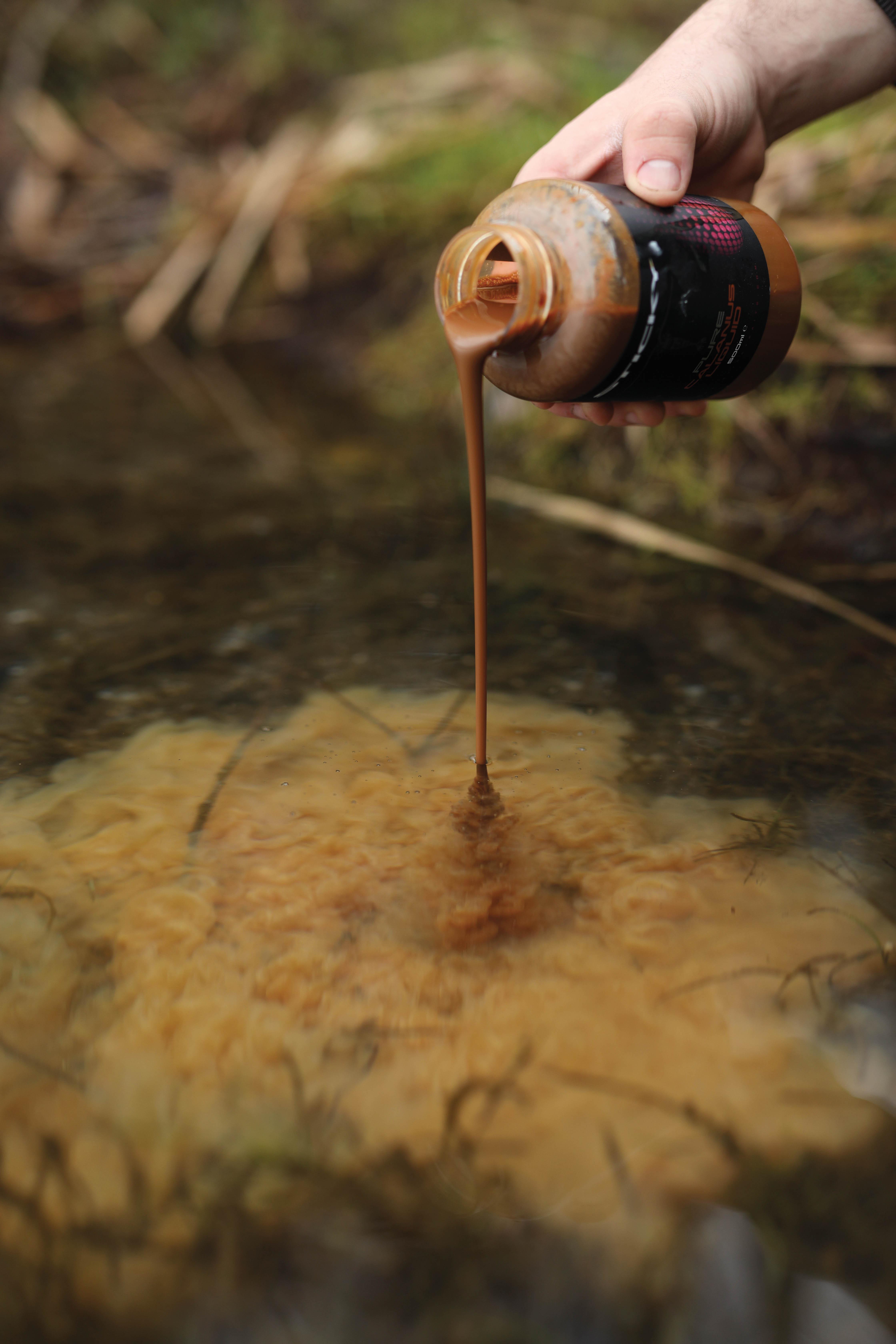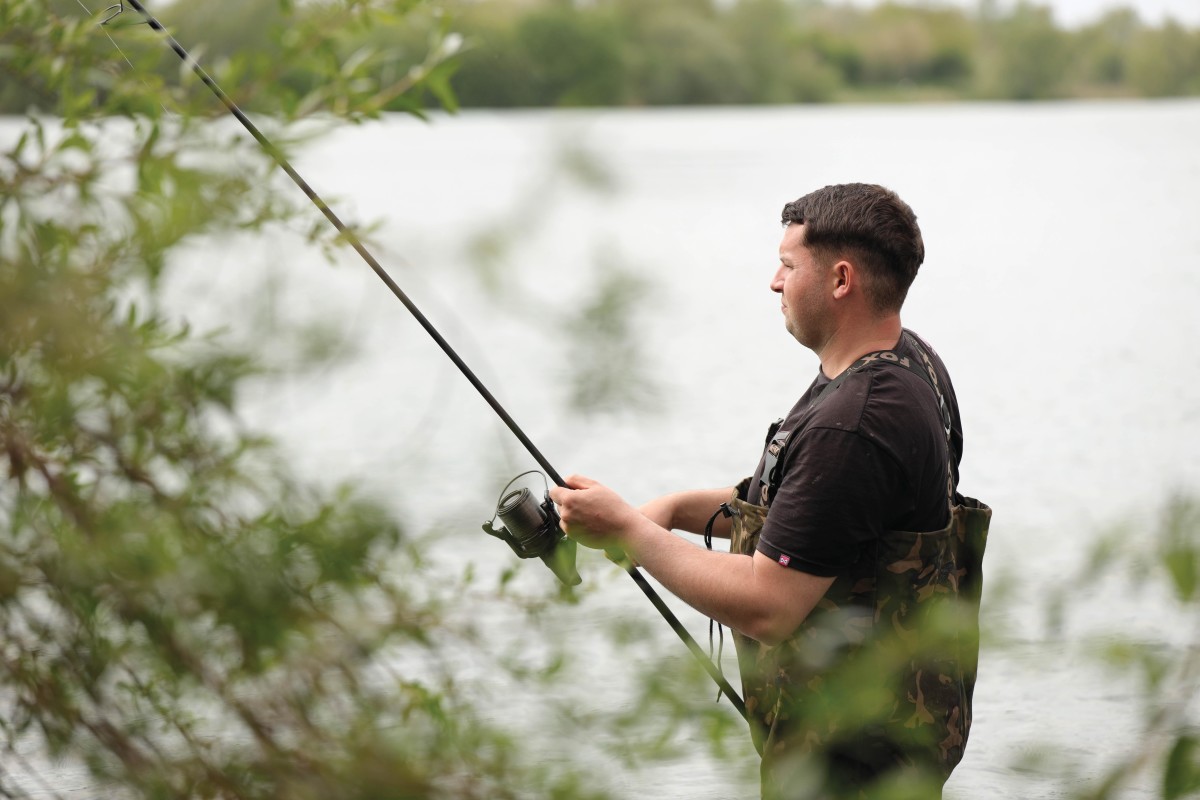
Bait Application On Busy Waters
Read them and reap: Tom Maker shares details of his baiting approach, and explains how observation and adaptation can pay dividends…
In percentage terms, how much difference do you think the correct bait, and its application affect the outcome of a session?
“That’s an easy one to answer: in my mind, around 80 per cent. Your baiting approach is something you can control, by way of what you’re applying, and/or the spot you choose to present on. The remaining 20 per cent comprises variables that you can’t control, like the fish’s willingness, or reluctance to feed, given the weather conditions. For me, bait application is something that should be thought about very carefully, as it has such an impact on the outcome. If you’re not tailoring your bait to suit the lakebed, the fish, or nuisance species, you can easily bog yourself down and struggle on certain waters.”
How precise are you when it comes to baiting? What’s the radius of your baited area around your spot? Give us some figures, in feet…
“I bait as accurately as possible, within a few feet at most, particularly at sub-100-yard range. With how tight the rods would usually be when I choose one spot, I want every single Spomb to land over the zone. I’ll redo one of the rods and I’ll often reel in some corn on the point of the hook—I’ve done so on numerous occasions—that’s when I know I’m right on the money! I’m not looking to bait either side of the spot, especially where there’s slightly deeper water, as bait won’t settle on the lakebed exactly below where it lands on the surface.”
If you know a Spomb is heading off course, or that it will land short, do you always stop it at that moment? Do you prefer to drop bait well away from the spot, rather than, say, 10ft short, or off to the side?
“I always stop it short—a Spomb away from the spot brings disaster! I know instantly when I cast the Spomb, whether it’s on course for the spot or is wayward. Don’t be fearful of stopping it if you know it’s not going to land in the zone, as you really will defeat the object of fishing accurately.”
Why do you think super-tight baiting is so successful? Does it create super-aggressive and competitive feeding amongst the carp that will see them drop their guard?
“On the venues I choose to fish, it’s all about creating competition. Very rarely will a carp be swimming on its own in these kinds of water, so it’s all about enticing them to feed. As soon as one carp drops and has a rummage around, it surely encourages other carp to drop their guard and have a feed, too. This in turn increases your chances of a bite. The carp become more competitive, and more clumsy as they try to beat the others to the free offerings. The tighter the bait, the harder it is for them to find room between other feeding fish, and their sense of danger diminishes as they all huddle together feeding.”
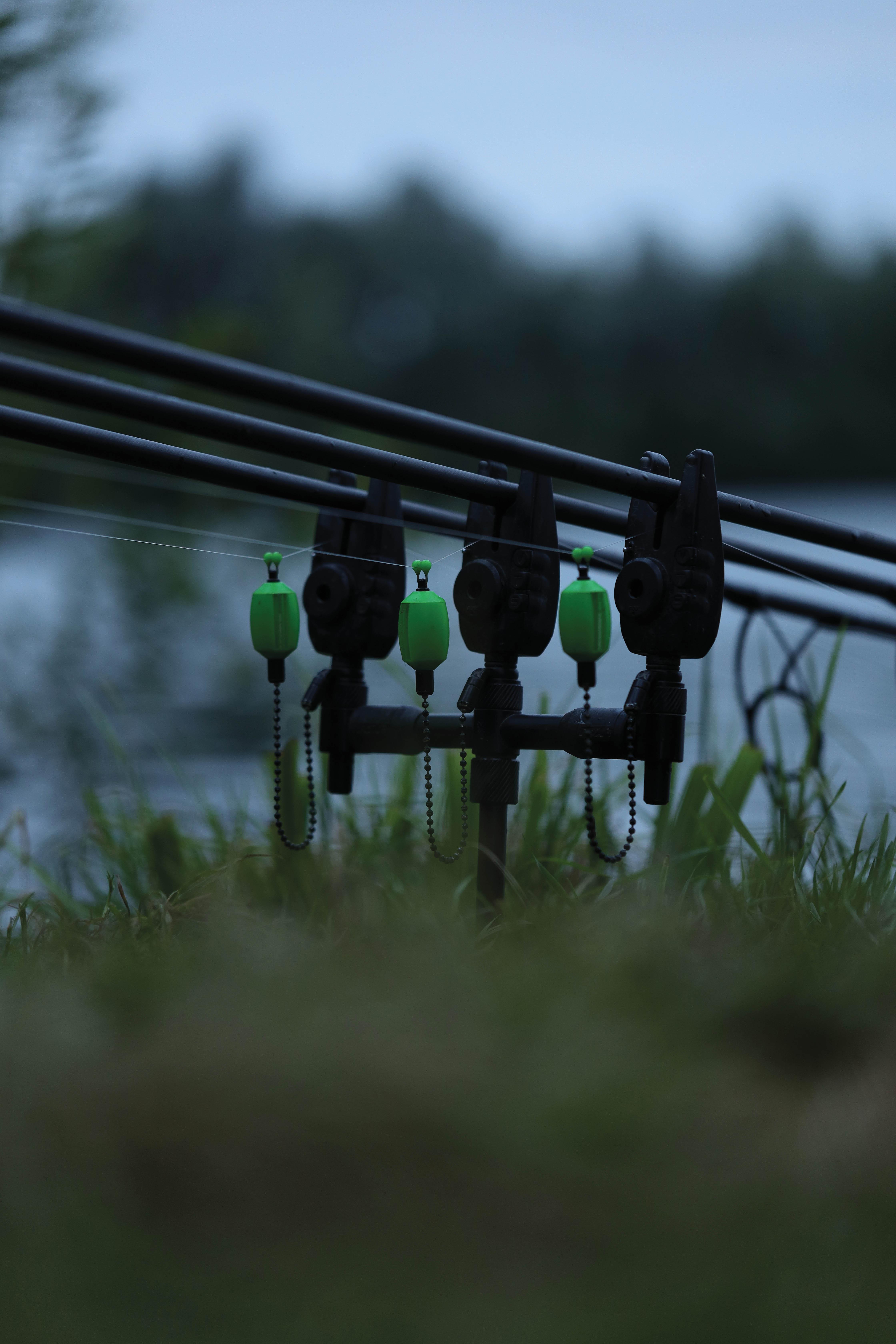
Does your baiting approach vary with the venue and stocking level? How would you compare your approach on Brasenose 1 and the Manor, for instance, to that at one of RH Fisheries’ waters?
“I fish Linear completely differently to how I would RH Fisheries’ waters, purely because the RH Fisheries carp are so cautious. On their venues, I usually fish for a bite at a time as the fish are cautious and easily spooked. They hate line pressure, shall we say, so I’ll usually opt for solid bags, or single hookbaits with small, mesh bags cast to signs of activity. At Linear, I look to find a spot before I present rigs on it, and will bait accordingly for a hit of carp over the course of a session. I wouldn’t say my tactics vary on any of the Linear waters. I’ll fish them all the same, pretty much, as the styles are very similar, whether it’s D-Rigs over bait, or Zigs. Solid bags rarely feature in my angling now, purely because of time constraints and how long they take to prepare. Time is precious!”
Have you noticed any patterns when you’ve caught the bigger fish in a lake? For instance, do they come at the start, or at the end of a feeding period? And have you caught just as many big ’uns when you’ve had a double or triple take?
“This is a very relevant topic. During the past year or so, I’ve fished Zigs for long periods in the warmer months, but the method has not produced the bigger carp. Readers might recall my quest for a Linear forty and how long it seemed to have been before all of a sudden, I had a crazy streak of big (thirty pounds-plus) carp. This included numerous forties, in quick succession. Zigs will bring more bites during the warmer, pre-spawning months, in my experience. When it comes to the stamp of carp, however, all my big ones have fallen to bait over rigs, so I’ve stuck to that ethos and have really concentrated on that approach. I really don’t think it was a coincidence that my fortunes changed, and I’ll continue to concentrate on the bait side of things until I catch my next target: a fifty from Linear!”
At the start of a session, you’ll feed a set number of Spombs. Is it five or six, perhaps, and has experience taught you that that number, and that amount of bait is just right to kick things off?
“I’d say so, yes. It’s all about reading the situation, looking at what’s in front of you and making a judgement depending on what the carp are doing. Are they active, and showing consistently? If the answer is yes, start off with a dozen Spombs and wait. If a bite comes fairly quickly, then don’t be scared to introduce more. It’s then a race against time to hold those carp in front of you, so you really need to give ’em some before they ‘do the off’ and seek out someone else’s bait. If the carp don’t seem to be active, then single hookbaits with a mesh bag attached will be my starting point, with no other bait introduced at all. You can always put more in, but you can’t take it out once you’ve fed!”
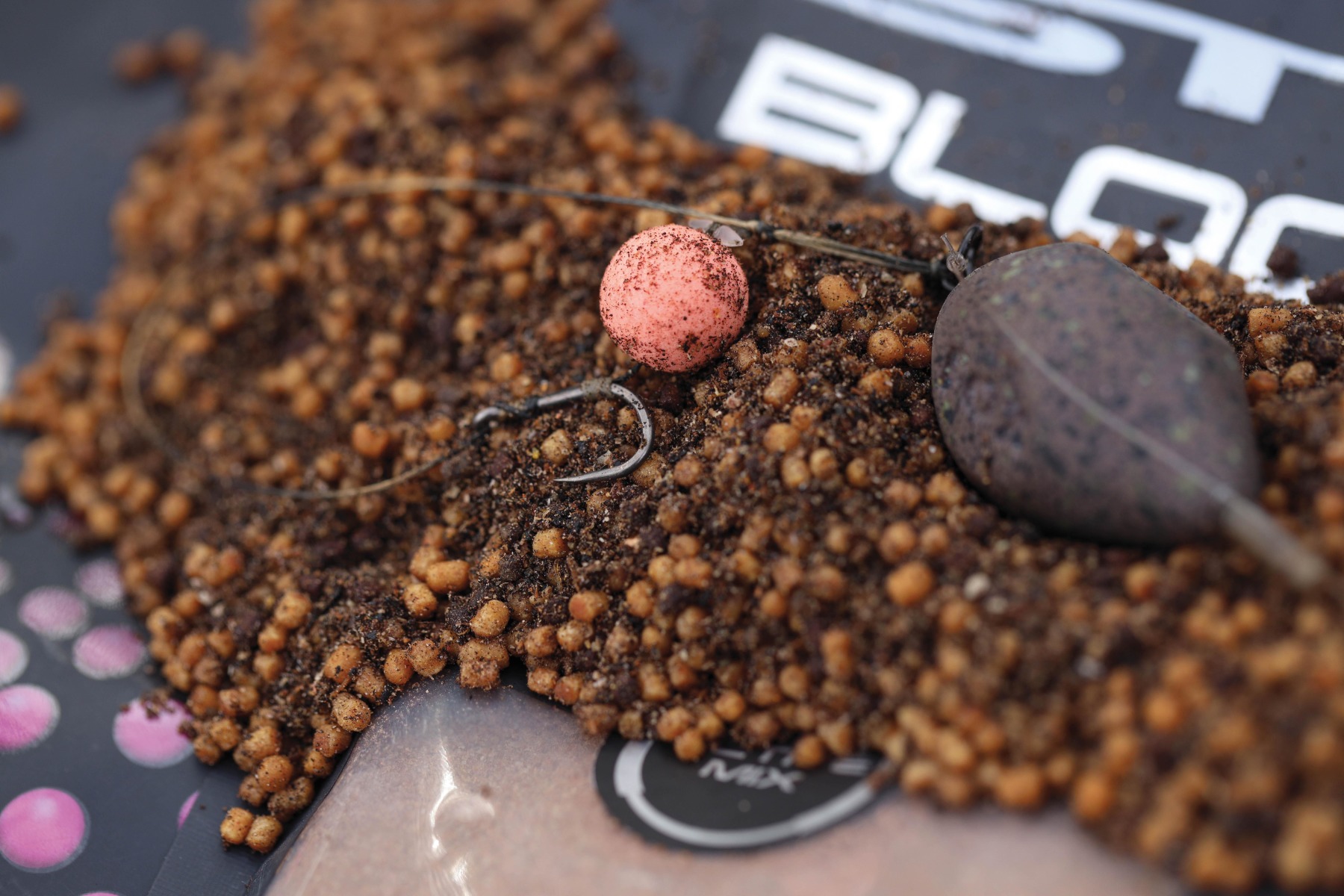
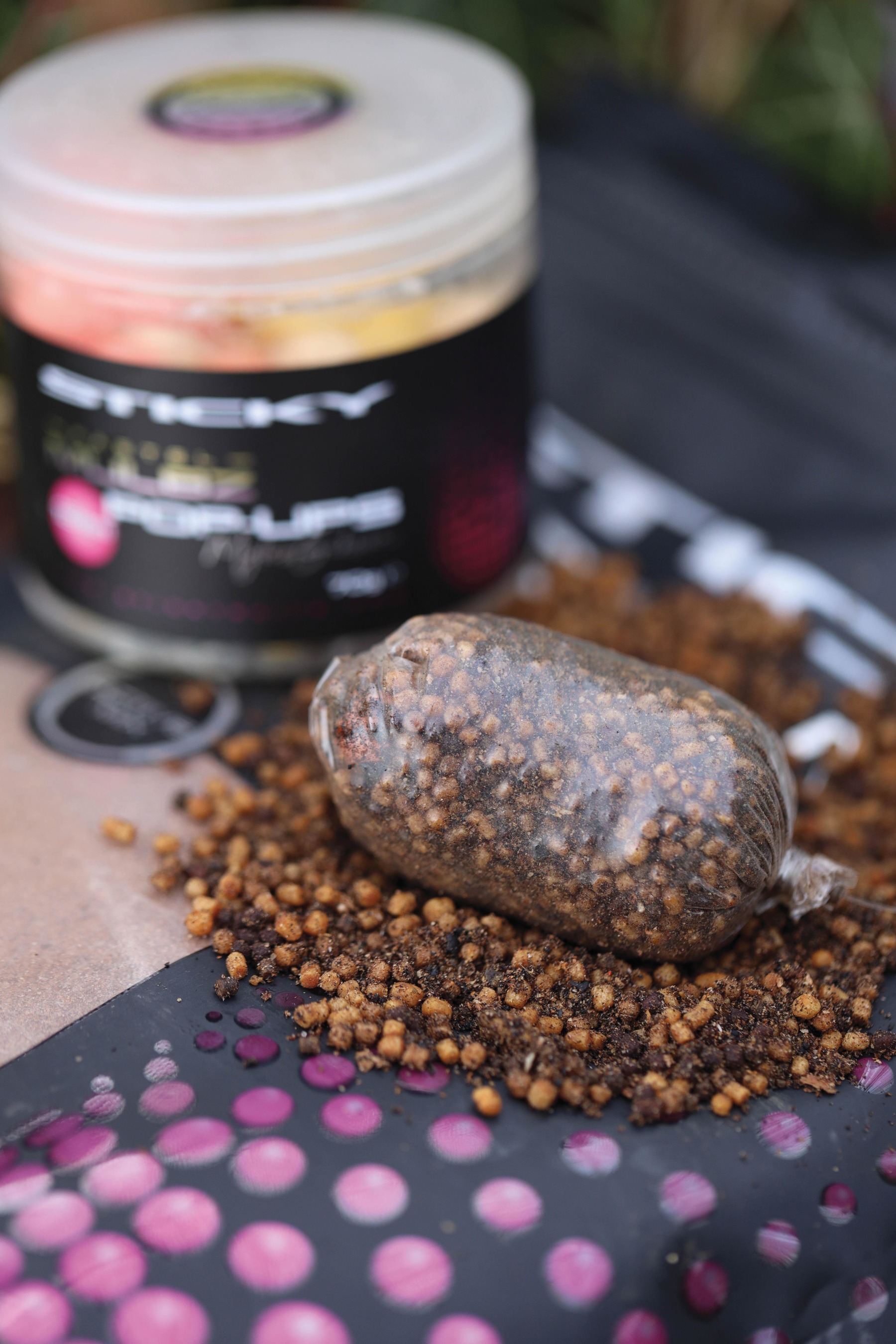
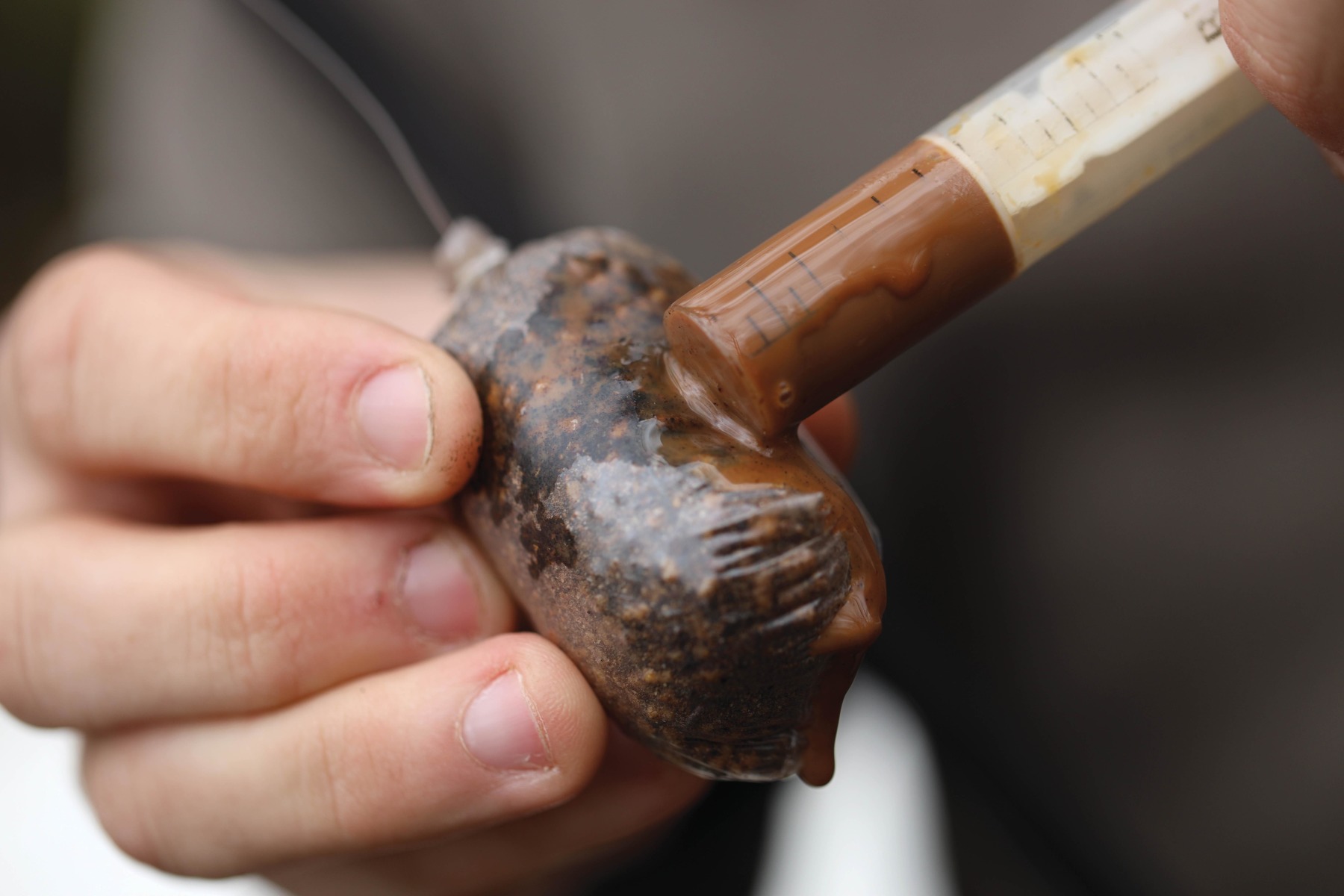
Might you ever introduce more bait at the start of the session? What would be the deciding factors, should you choose to double, or even treble the number of casts you initially make with the Spomb?
“Like I said, when the carp are showing and the signs are that it’s all going to go off! You’d be surprised at how insignificant a bucket of bait looks on a spot, especially after a few carp have torn it all up. That’s why I use my mulch mix. I believe it offers a perfect carpet of feed and ensures that the fish will stay in the area longer as they continue to seek out the smaller items. With straight boilie, I struggle to see how the approach might keep the carp in the area once they’ve been eaten.”
What common mistakes do you see anglers make when it comes to bait, and bait application on busy day-ticket waters?
“Overcomplicating things and following trends they’ve noted from social media. That might sound hypocritical, as readers will have seen details of my mulch mix published in various articles and online. It works, though, and there’s no denying that. Others will see a certain trend from an angler and look to do the same, but they might not be doing it on the right water or in the right situation. It’s the same with fishing Zigs, rather than over bait. Some anglers just don’t seem to be able to read the signs, and this can make a session a thousand times harder.
“The other mistake I see people make is doing nothing. If you’re not getting bites, there’ll be a reason, so do something about it. Don’t lay on your bedchair watching TV, as you could miss vital shows and signs of carp that you’ll only see when watching the water!”
Is that any different on low-stock venues?
“Not really. That laziness seems to creep in with many anglers, those who simply want to flick the rods out and then retreat into their bivvies. On the low-stock venues, it’s even more important to be proactive, yet some just aren’t willing to put the effort in. I truly believe that some anglers think I just turn up and catch, but most of the time, I really have to put the legwork in, just like anyone else, to achieve the results.”
Sloppy spod mixes were all the rage 10 years ago. Is this something you ever use nowadays, or do you prefer to get the bait straight down to the deck?
“I’d say not, without any need for a mix, three Zigs are enough to entice bites when fished at the right depth. A single Zig will catch their attention, regardless of whether a sloppy mix is coming down through the layers. The only time I’d use it is if I was also introducing food items that end up on the deck for later in the day, when looking to switch to the bottom for the night. I certainly don’t see them making a comeback, that’s for sure!”
Are there any ingredients you used to always include in your spod mix that you now don’t, and if there are, why have they been removed?
“I flirt a little with various particles that form the base of smaller items in my mix, but I can’t think of anything that always was in there that now isn’t. Krill or Manilla have always been the main ingredient, along with hemp and corn. I might vary the liquid, depending on what new goodies Sticky have sourced, but I really couldn’t put my finger on anything. Boring, I know… sorry!”
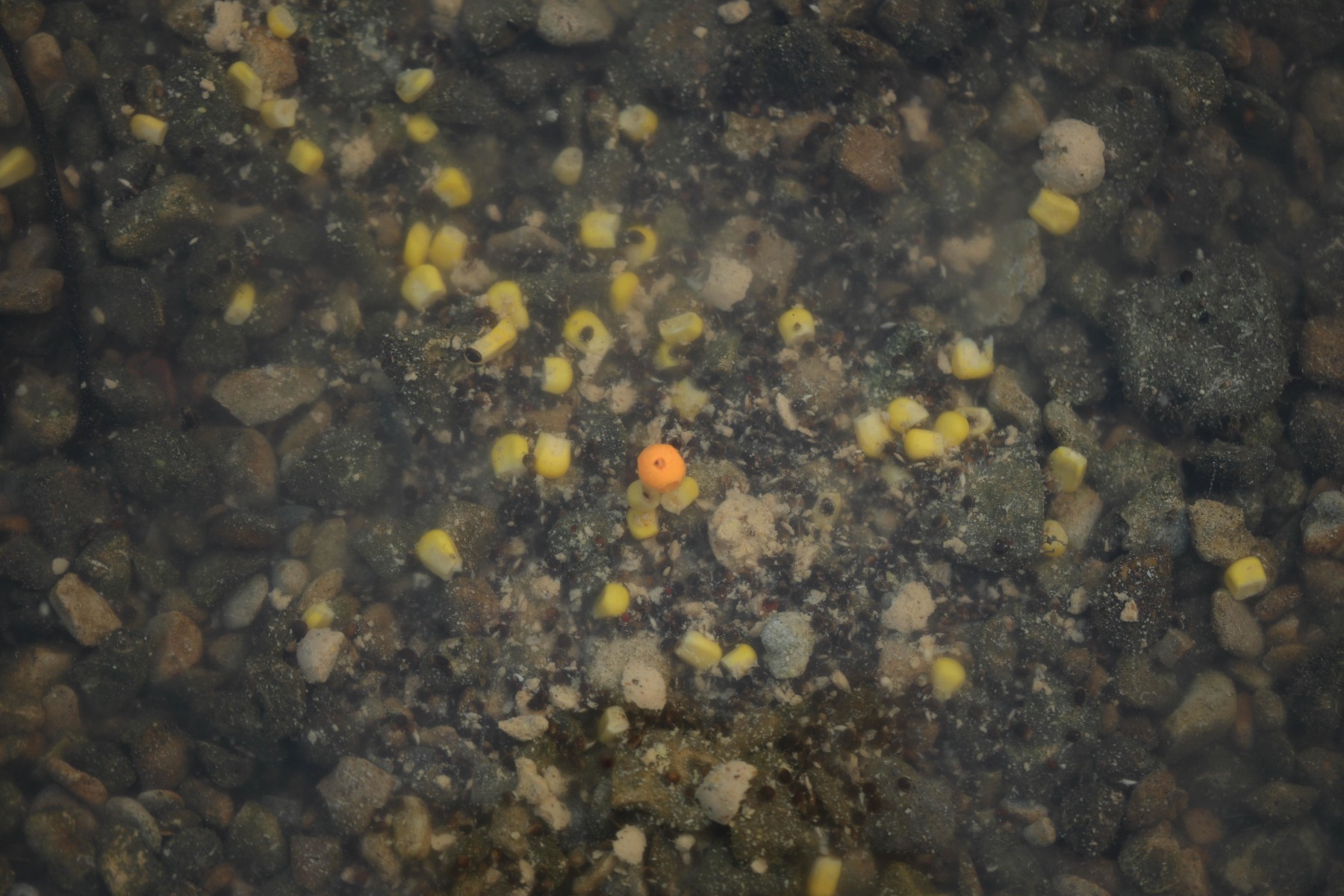
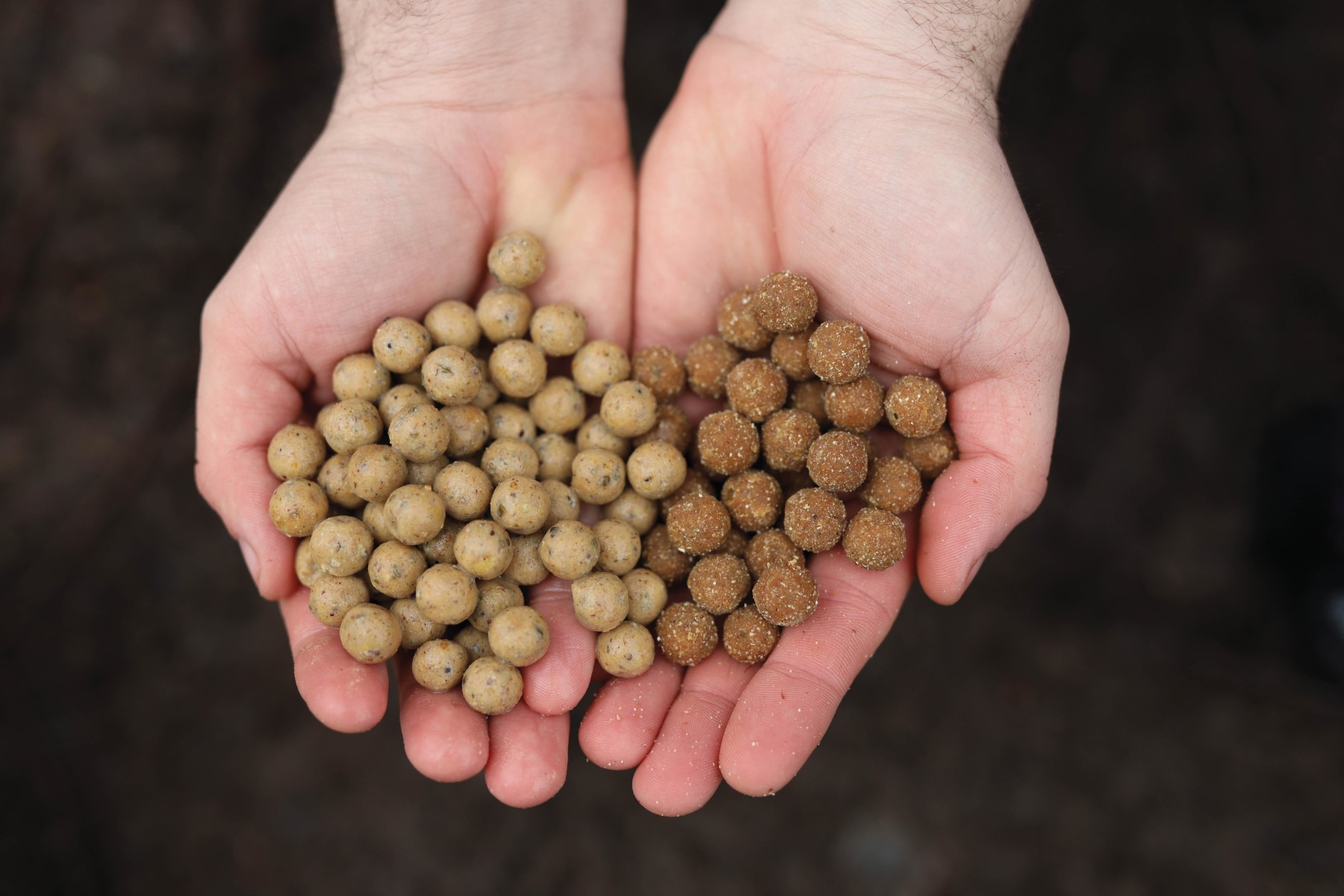
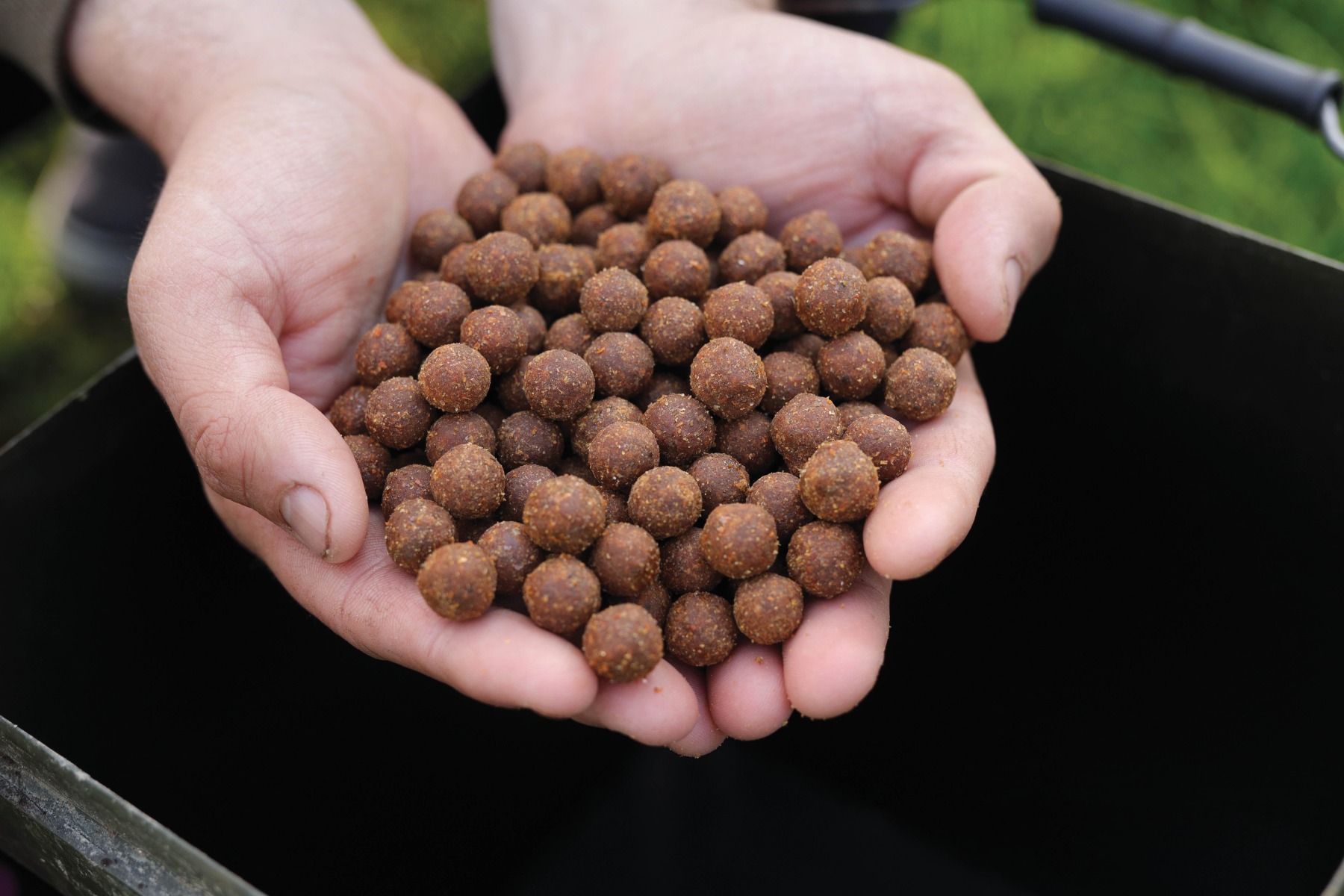
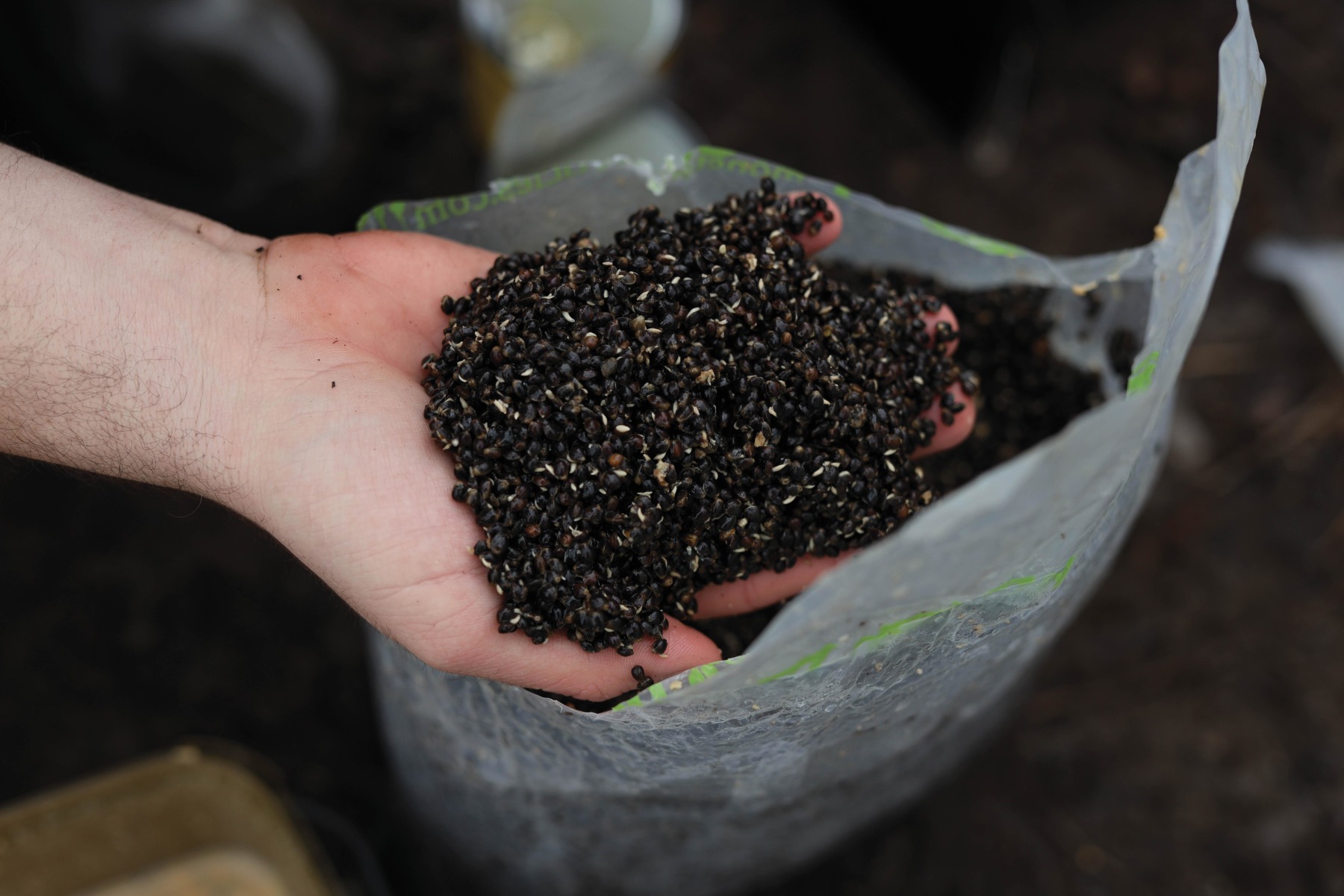
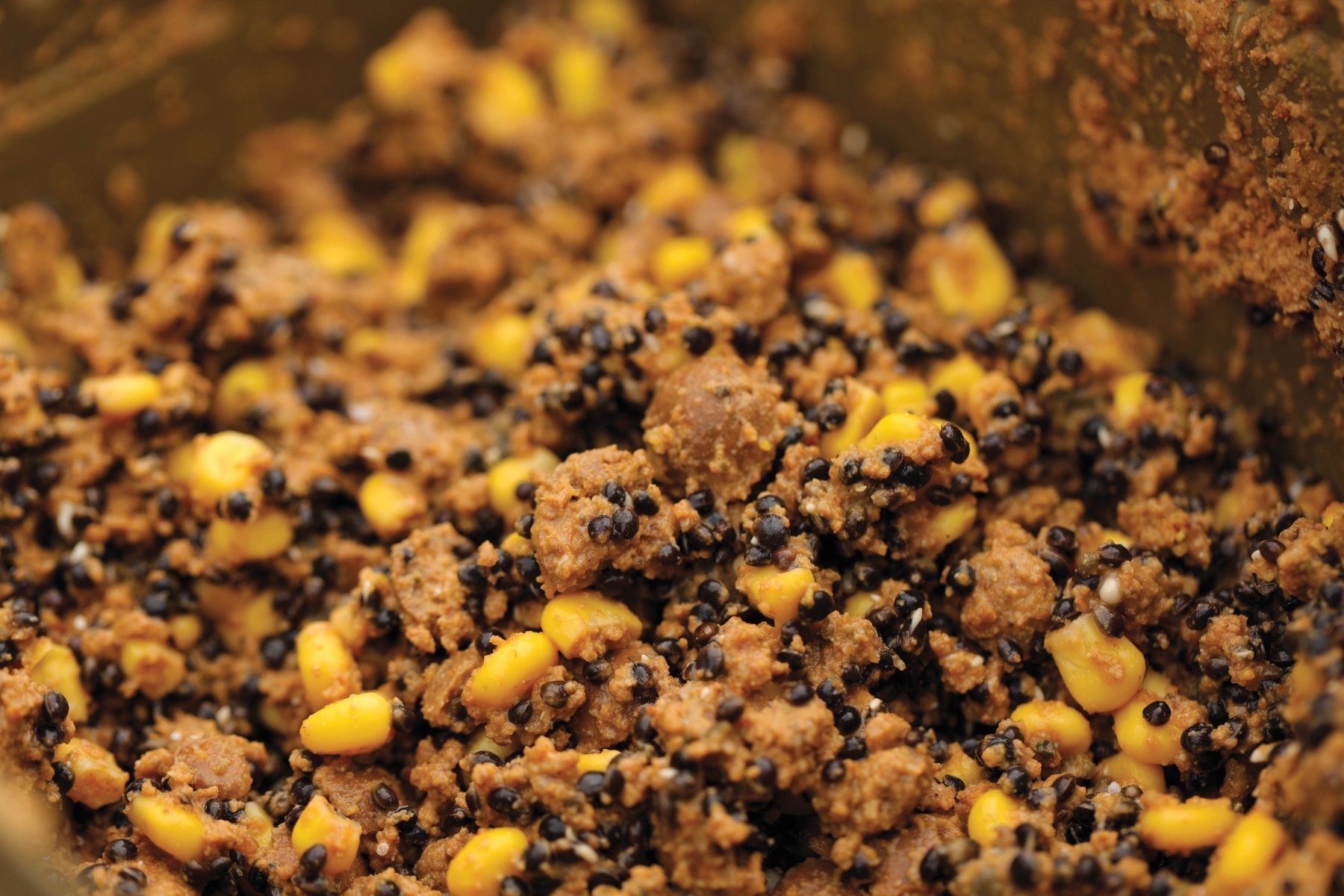
You mentioned time earlier, what is there anything else that dictates when you’d use a solid bag, rather than your D-Rig with a wafter hookbait?
“That’s a tough one. If I had to nail it down to certain points, then I’d say distance is the key factor. They fly a lot better, and obviously don’t tangle, whereas the D-Rig with a little mesh bag can drag in the air a little if you don’t give it some hammer. The presentation a bag offers is also superior at long distances, so if I were fishing at range, I’d favour this method, for sure.”
Does your baiting approach vary, then, according to which of the above methods you’re using?
“In all honesty, I don’t tend to fish solid bags with a mix over the top. I see them as a one-bite tactic, rather than them being deployed whilst I look to build towards hits of fish, almost like a bright single being used as a single hookbait.”
Anyone can buy, and use the same bait as you, but do you have any little tricks, such as soaking it or crumbing it? And what about keeping maggots, casters or your freezer bait as fresh as possible…?
“My mulch mix is easy to make up, and I wouldn’t say it gives me an edge, as such, it’s just understanding what the bait mix presents, and how it becomes so effective.
“If I’m looking for a real get-out-of-jail tactic, then it has to be worms. They seem to be the trend at the moment, thanks to social media, and I’ve used them for a long time. There is still a knack to using them, though. They need to be fresh, and also chopped just before use. They’ve brought me bites in the past, when I know catching really shouldn’t have been possible!”
Any last bits of advice our readers can take away when it comes to bait and how to apply it?
“Understand your mix, understand what it’s doing when you’re applying it, and buy the right products. Every item in my mix is in it for a reason and not just for show. Use of the mulch is by far the best method I’ve found to get smaller items to the bottom. I always look to ensure that there’s a good carpet of feed on the lakebed to trigger the feeding. Most of all, though, learn how and when the best times are to use it. Let the carp do the talking and gauge everything from what they’re doing, don’t just guess. Use what’s in front of you and paint a picture. Then apply the method to ultimately get that first bite, and build from there.”
